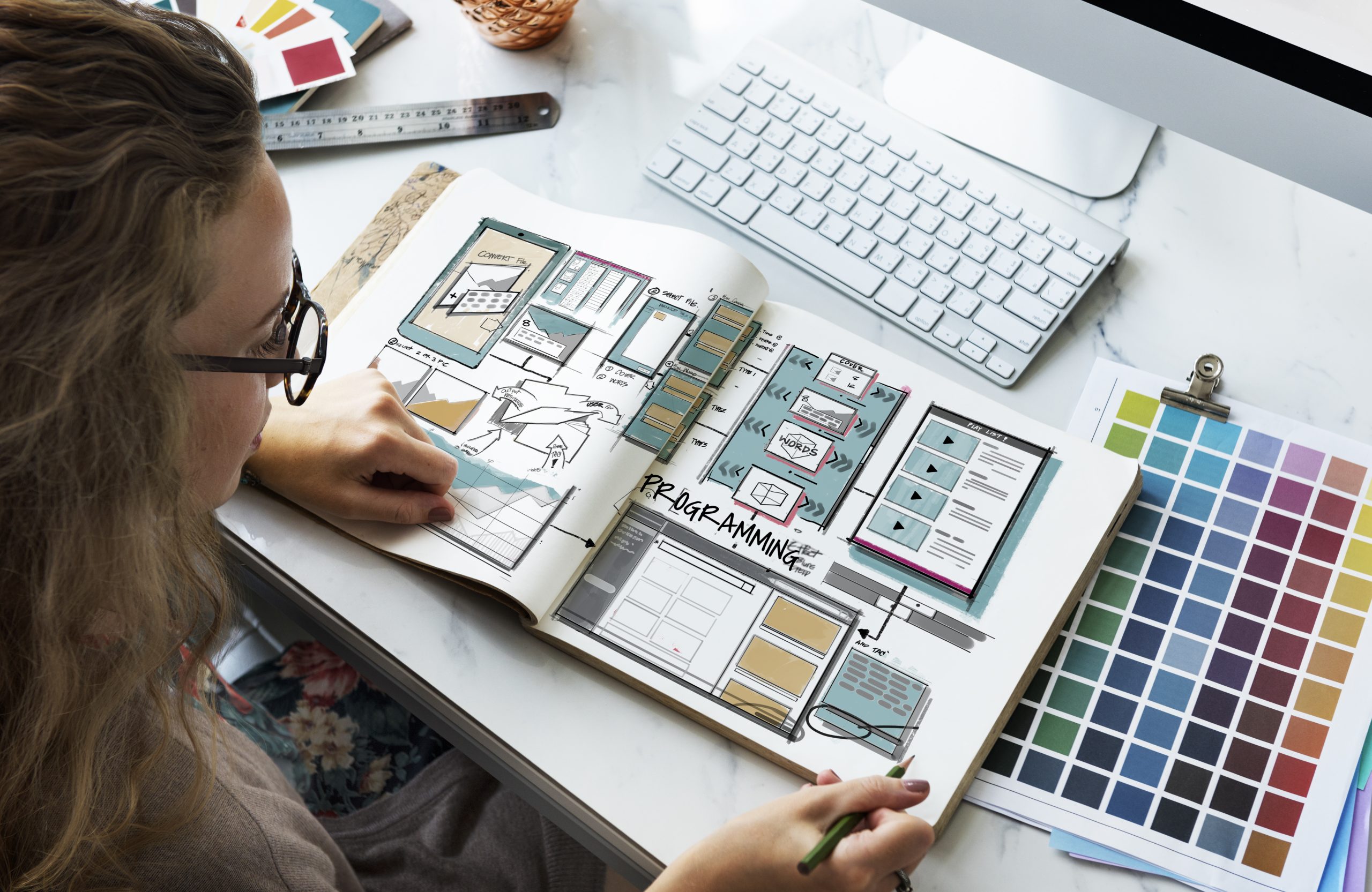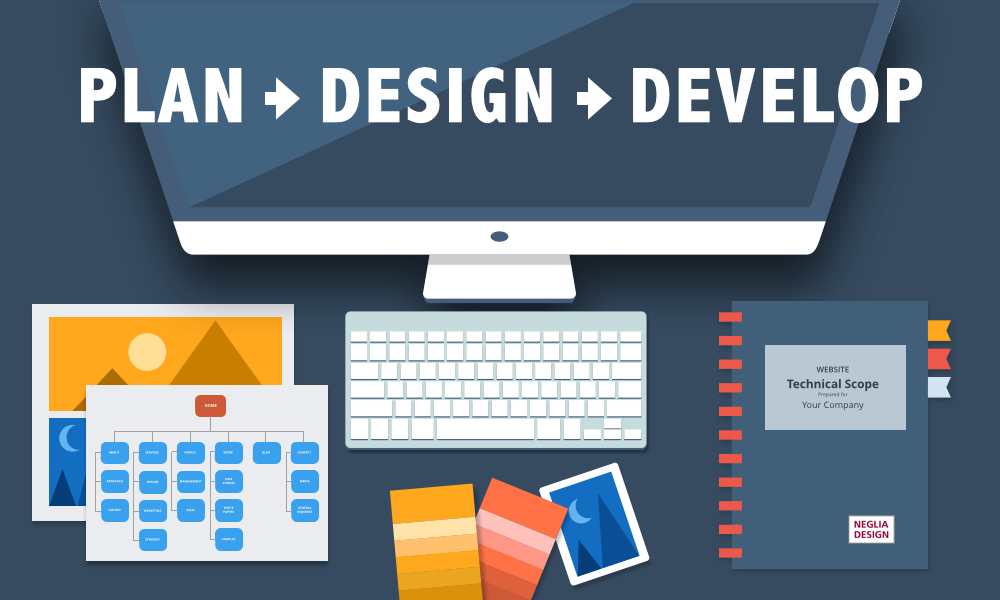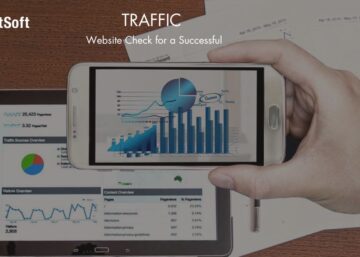In today’s digital landscape, having a well-designed website is essential for businesses looking to establish an online presence. The modern web design process involves a series of steps that ensure a user-friendly, visually appealing, and functional website. At NetSoft, we understand the importance of a structured approach to web design, and in this article, we’ll take you through the modern web design process step by step.
Step 1: Discovery and Research
The first step in the web design process is discovery. During this phase, designers gather information about the client’s business, target audience, and objectives. Key activities include:
- Client Interviews: Understanding the client’s vision, goals, and any specific requirements.
- Market Research: Analyzing competitors and industry trends to identify opportunities and challenges.
- User Research: Gathering insights about the target audience’s needs, preferences, and behaviors.
Step 2: Planning
Once the research phase is complete, the planning stage begins. This involves:
- Creating a Sitemap: Outlining the website’s structure, including main pages and subpages.
- Defining User Personas: Identifying different types of users who will interact with the website and tailoring the design to meet their needs.
- Setting Goals: Establishing clear, measurable objectives for the website, such as increasing conversions or enhancing user engagement.
Step 3: Wireframing
In the wireframing phase, designers create a blueprint of the website. This visual representation focuses on layout and functionality without diving into aesthetics. Key components include:
- Low-Fidelity Wireframes: Simple sketches that outline the structure of each page.
- High-Fidelity Wireframes: More detailed representations that include annotations for interactions and content placement.
Step 4: Visual Design
Once wireframes are approved, the visual design phase begins. This step involves:
- Designing User Interfaces: Creating visually appealing layouts that align with the brand identity and enhance user experience.
- Choosing Color Schemes and Fonts: Selecting colors, typography, and graphic elements that resonate with the target audience.
- Creating Design Mockups: Developing high-fidelity mockups that showcase how the final website will look.
Step 5: Development
After the design is finalized, the development phase begins. This is where the website comes to life through coding and programming. Key activities include:
- Front-End Development: Converting the visual designs into HTML, CSS, and JavaScript to create the user interface.
- Back-End Development: Setting up servers, databases, and application logic to ensure the website functions correctly.
- Content Management System (CMS) Integration: Implementing a CMS that allows the client to manage content easily.
Step 6: Testing
Before launching the website, rigorous testing is essential to ensure everything functions as intended. This includes:
- Functionality Testing: Verifying that all links, forms, and interactive elements work correctly.
- Usability Testing: Gathering feedback from real users to identify any issues or areas for improvement.
- Cross-Browser and Device Testing: Ensuring the website performs consistently across different browsers and devices.
Step 7: Launch
Once testing is complete and any necessary adjustments are made, the website is ready to launch. This involves:
- Final Review: Conducting a last check to ensure all elements are functioning correctly.
- Deployment: Making the website live and accessible to users.
- Monitoring: Keeping an eye on website performance and user interactions after launch to address any issues promptly.
Step 8: Maintenance and Updates
The web design process doesn’t end at launch. Ongoing maintenance is crucial to keep the website running smoothly and up-to-date. This includes:
- Regular Updates: Keeping content fresh and relevant to engage users.
- Performance Monitoring: Analyzing website analytics to identify areas for improvement.
- Security Checks: Ensuring the website remains secure and protected from vulnerabilities.
At NetSoft, we specialize in enhancing user experiences through comprehensive UX audits and tailored web design solutions. Our team is committed to helping businesses improve their online presence and drive conversions.
Visit our Web Design Service or contact us at +971 50 2194018 for a consultation today!

FAQ
1. How long does the web design process take?
The duration of the web design process varies based on the complexity of the project. On average, it can take anywhere from a few weeks to several months.
2. Can I update my website after it’s launched?
Yes, regular updates and maintenance are essential for keeping your website relevant and functional. A good CMS allows you to make updates easily.
3. What is the cost of web design?
The cost of web design depends on various factors, including the complexity of the site, design requirements, and additional features. At NetSoft, we offer tailored solutions to fit different budgets.
4. Do I need to provide content for my website?
While we can help with content creation, it’s beneficial for clients to provide input and insights about their business to ensure the content accurately reflects their brand.
5. How can I ensure my website is mobile-friendly?
Responsive design is essential for a mobile-friendly website. During the design process, we ensure that your website adapts seamlessly to various screen sizes and devices.
At NetSoft, we specialize in delivering tailored web design solutions that cater to your business needs. Our step-by-step approach ensures a user-friendly and effective website that drives results. Explore our web design services or contact us at +971 50 2194018 for a consultation today!



